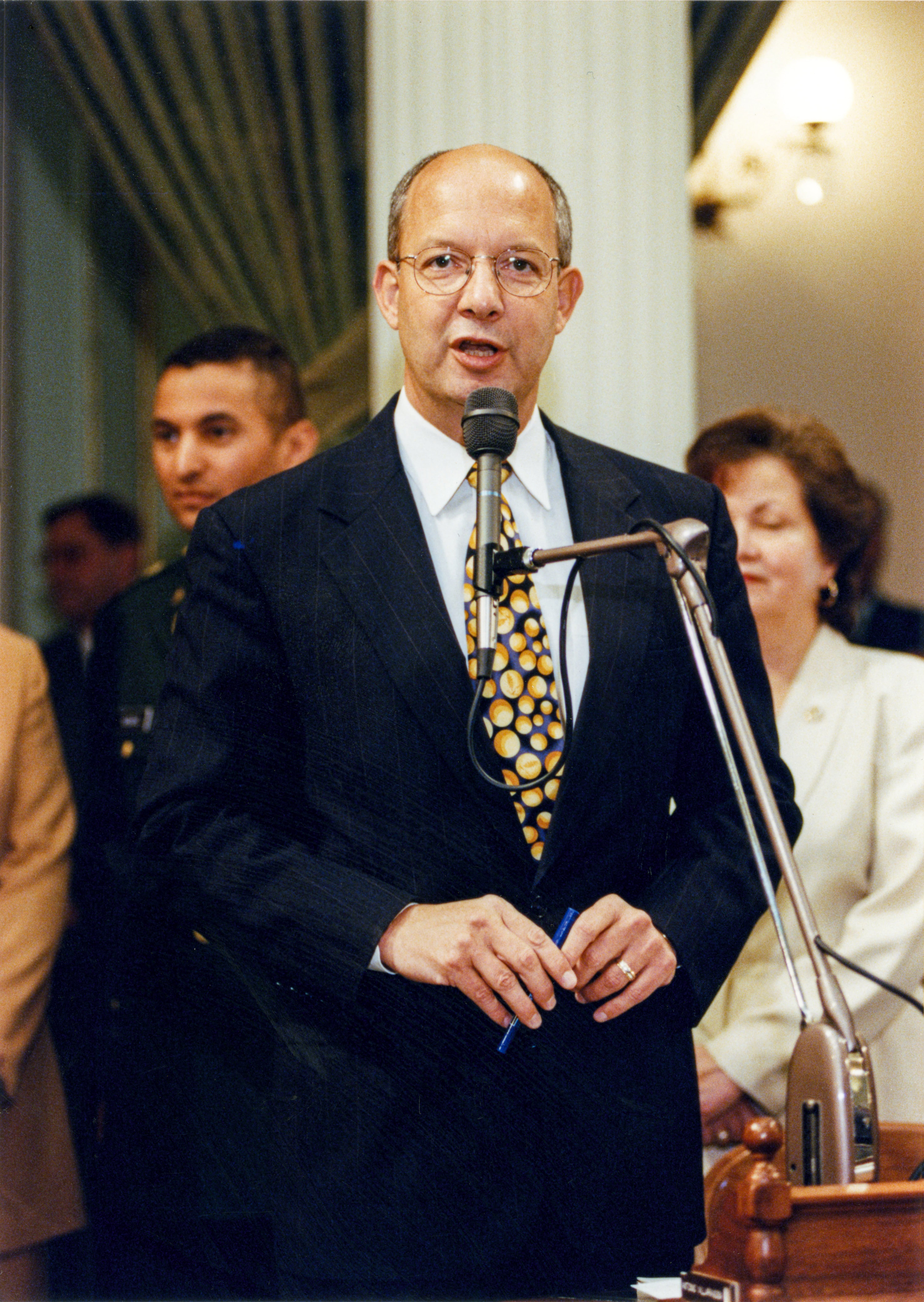
Sanctuary 30th Anniversary Series – Blog #9 “Killer algae stopped in its tracks – Coast and Marine Sanctuary Protected ” by Fred Keeley
In this series about the Monterey Bay National Marine Sanctuary, you have read much about the leadership of Leon Panetta and other ocean heroes. Those who wrote the federal legislation, those who gathered massive public support for it, and the many benefits we have all experienced because of it. What a great job they all did.
In this article, we will look at one of the smaller positive impacts of the marine sanctuary and other coast and ocean protections along our fabulous coastline.
On April 30, 2002, David Epel at the Stanford University Hopkins Marine Station in Pacific Grove, contacted me in my capitol office in Sacramento. Dr. Epel told us that there was very dangerous marine algae loose along the California coast and that it was a major threat to marine life.
Dr. Epel shared an article from the Los Angeles Times, which called the algae a “killer algae” that grows quickly, and blots out all sunlight, thus, killing all marine life in its path.
The algae, Caulerpa taxifolia, was originally discovered in the Mediterranean when it was accidentally flushed out of a commercial aquarium. In a matter of months, 1,000 miles of the Mediterranean coast were devastated, “effectively cutting out massive amounts of sea life there”.
In the late summer of that year, Caulerpa Taxifolia was discovered in a couple of locations on California’s coast. This caused immediate consternation among marine scientists, nearshore fishers, marine conservationists, and the visitor-serving industry. Folks from north to south quickly sprung into action, urging immediate legislation to authorize the Department of Boating and Waterways to eradicate the algae before it could do massive damage.
The problem was advanced to my office by the California Resources Secretary, asking for urgent legislation, because there were only two weeks left in the two-year legislative session. Waiting until January of the next year would allow the algae to gain a further foothold along the coast and be much more expensive and difficult to remove.
That is when I authored Assembly Bill 1059, to give Boating and Waterways the funding and authority to eradicate Caulerpa Taxifolia in our coastal waterways.
Because it was so late in the legislative session, lots of legislative rules needed to be waived, so the bill could be to Governor Davis in time. As a member of the Assembly’s leadership, I was able to work with other legislative leaders in both houses to fast-track the legislation. In a humous moment in the Senate Rules Committee, state Senate President Pro-Tem John Burton stopped an opponent of the legislation in mid-sentence. The offending speaker could not properly pronounce Caulerpa Taxifolia, so the Senator told him that he could not testify on the bill if he could not say it correctly.
When the bill reached the Senate floor for a vote, Carrie McNeil, principal consultant to the Senate Committee on Natural Resources and Wildlife, offered carefully crafted amendments to more fully fund and operationalize the legislation. With those amendments, the bill was approved by the state Senate, and sent to the Assembly for one final vote, on August 27th.
The clock was ticking. By state Constitutional requirement, the Legislature must adjourn at midnight on August 31st. Hundreds of bills were being voted on in both legislative chambers, which were meeting 15-18 hours each day and night. As Speaker pro Tem, it was my duty to manage the flow of legislation on the Assembly floor. Tick, tick, tick. Not wishing to jump ahead of other legislators’ bills that also needed approval from the Assembly, I worked with the Democratic and Republican leaders to fit AB 1059 into the queue, in a timely manner.
On the last day of the session, AB 1059 cleared the Assembly, headed to the Governor’s desk, and was signed into law. Certainly, it helps to know the legislative process and be a member of leadership. What you do with that is proof of leadership.
With help from marine scientists, boaters, fishers, and others, a massive marine life kill was prevented, and our marine sanctuary was protected. Working together, rapidly, the problem was solved.

Fred Keeley represented the Central Coast in the California Assembly from 1996 through 2002. He is a founding board member of the Monterey Bay National Marine Sanctuary Foundation. For more on the sanctuary’s 30th anniversary, go to montereybayfoundation.org.
About this series
Monterey Bay National Marine Sanctuary celebrates its 30th anniversary this fall, and the national sanctuary system celebrates its 50th. For the next 12 weeks, the Sentinel will publish columns by former U.S. Secretary of Defense Leon Panetta, along with Sam Farr, Dan Haifley, Fred Keeley, and Sanctuary Superintendent Dr. Lisa Wooninck. All of these contributors serve on the board of Monterey Bay National Marine Sanctuary Foundation and were involved with the Sanctuary’s designation.

